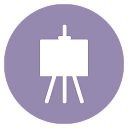









Church of the Seven Churches and St. Stephen's Square
In a thicket of religious symbols, a labyrinthine journey through the centuries



Where

What it is and where it is
The complex of Santo Stefano is an inescapable place in the history of Bologna, so tied to worship and ritual. The entire area, which today appears to us to be what it is by a process of aggregation of several sacred spaces that are clearly distinguishable from each other (the Basilica is also known as the "Seven Churches"), is an attempt to bring back to the center of the city of Bologna the sacred places of Jerusalem and in particular the Holy Sepulcher.
Why it is special
By its very symbolic vocation, the Basilica of Santo Stefano is a unique place, a true labyrinth made up of many details. Each space has its pearls: just to name a few, the Church of the Crucifix, formerly a place of worship of the Lombards, with frescoes by Simone dei Crocifissi and 14th-century Bolognese masters; the courtyard of Pilate, with the basin donated by the Lombard rulers; and the rotunda of the Holy Sepulcher, with the monumental tomb of St. Petronius (whose remains have been moved today).
Not to be missed
Inside Pilate's courtyard, the search for symbols derived directly from sacred stories about the Passion is evocative: the rooster of St. Peter, the scourging column, and the basin in which Pilate is said to have washed his hands. It is said that in the Benedictine cloister Dante Alighieri loved to find refreshment.
A bit of history
The complex is said to have risen on the remains of a pagan temple. The first sacred place in chronological order is the Church dedicated to Ss. Vitale and Agricola, built in the 4th century to preserve the remains of the first Bolognese martyrs. It was St. Petronius': idea to rebuild a complex that was directly related to the sites in Jerusalem. As a consequence, the site was soon known as "Hierusalem bononiensis." Benedictine monks, in contact with the Crusaders, between the 11th and 12th centuries modified the spaces of the complex in accordance with what was done in Jerusalem in 1048 by Constantine Monomachus.
Curiosities
On the outside of the Church of the Holy Sepulcher, toward the square, to the right of the portal stands the "Stone of Truth," which according to tradition changed color upon hearing the statements of unfaithful wives. Several women, supposed adulteresses, were killed by their husbands and then the bishop forbade everyone to approach the stone, which, by a miracle, became totally opaque.
Enter the Map of Italy's Undiscovered Wonders and find treasures where you least expect it... Inspire, Recommend, Share...
Collections
The Map thanks:
In the Community
Enter the Map of Italy's Undiscovered Wonders and find treasures where you least expect it... Inspire, Recommend, Share...
Where

Collections

